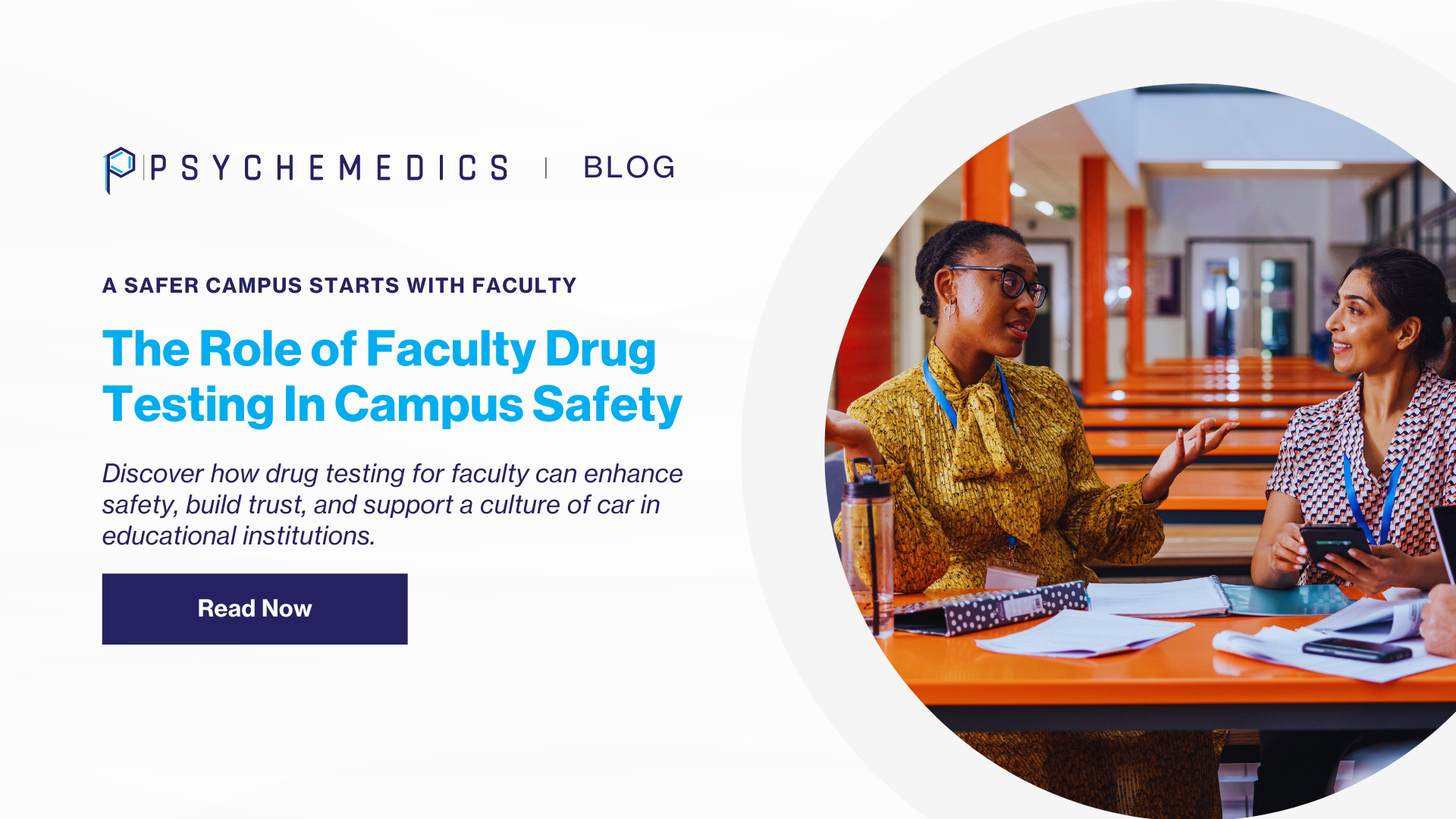Ensuring the safety and well-being of students is a top priority for every educational institution. While much attention is often placed on student behavior, an equally critical aspect is the responsibility of faculty and staff to uphold a safe, supportive, and drug-free environment. Faculty drug testing is emerging as a proactive measure that protects students and fosters a culture of trust and accountability within schools and universities.
In this post, we’ll explore the importance of faculty drug testing, its benefits, and how educational institutions can implement effective testing programs.
The Need for Faculty Drug Testing
Faculty as Role Models
Faculty and staff play a pivotal role in shaping the student experience. They are mentors, educators, and often the first line of support for students facing challenges. Substance use among faculty not only undermines their ability to perform their duties but also sets a poor example for students, potentially normalizing unhealthy behaviors.
Addressing the Risk Factors
While the prevalence of substance abuse in educational settings among faculty is less publicized, it is not insignificant. Like any profession, educators are not immune to the challenges of stress, burnout, and mental health struggles, which can lead to substance misuse. According to the Substance Abuse and Mental Health Services Administration (SAMHSA), workplace substance abuse affects various industries, including education, contributing to decreased productivity, absenteeism, and safety concerns.
Avoiding the Oversight: Including Faculty in Wellness Testing
When schools implement health and wellness testing programs, the focus is often on the students. However, this approach can advertently overlook faculty and staff, who are essential to creating a safe and productive learning environment. Faculty testing not only enhances the program’s overall effectiveness but also fosters a sense of solidarity across the campus community.
By including staff in these initiatives, institutions send a clear message: a drug-free campus is a shared responsibility. This inclusive approach encourages mutual accountability and demonstrates a commitment to supporting everyone – students and faculty alike – in maintaining their health and well-being.
Ensuring a Safe Environment
The presence of impaired faculty or staff poses risks to campus safety, including:
- Student Safety: Impaired judgment can lead to inappropriate behavior, negligence, or even accidents.
- Colleague Well-being: Faculty substance use can create tensions and reduce overall workplace morale.
- Institutional Reputation: Incidents involving faculty substance use can harm the institution’s credibility and trustworthiness.
Benefits of Faculty Drug Testing
- Enhanced Campus Safety
Drug testing ensures that faculty and staff are fit to perform their roles responsibly, reducing the likelihood of accidents, misconduct, or impaired decision-making.
- Fostering Trust and Accountability
A transparent drug testing program demonstrates the institution’s commitment to integrity and accountability, fostering trust among students, parents, and the broader community.
- Supporting Faculty Wellness
Testing programs can serve as an entry point for early intervention, offering resources and support for faculty struggling with substance use.
- Reducing Liability
By implementing drug testing, schools can mitigate risks and reduce liability in cases of incidents involving impaired faculty.
- Promoting a Drug-Free Culture
Drug testing reinforces the institution’s dedication to maintaining a drug-free environment, aligning with broader campus safety initiatives.
Best Practices for Faculty Drug Testing Programs
- Develop Clear Policies
Before implementing a drug testing program, it is essential to establish clear policies that outline:
- The purpose of the program.
- Testing procedures and protocols.
- Consequences for positive test results.
- Available support and resources for those who test positive.
Transparency and communication are key to gaining faculty buy-in and reducing concerns about fairness or privacy.
- Utilize Advanced Testing Methods
Hair drug testing is the preferred method for institutions due to its accuracy and extended detection window. Unlike urine or saliva tests, hair tests can detect drug use over 90 days, providing a comprehensive view of substance use patterns. This reduces the need for frequent testing and ensures reliable results.
- Focus on Prevention and Support
Testing programs should be part of a broader wellness initiative that includes:
- Access to counseling and rehabilitation services.
- Education about the risks of substance use.
- Resources for stress management and mental health support.
By emphasizing prevention and support, institutions can create a culture of care rather than punishment.
- Conduct Regular and Random Testing
While pre-employment testing is common, regular and random testing ensures ongoing accountability. This approach helps identify issues early and deters substance use among faculty and staff.
- Respect Privacy and Legal Compliance
Faculty drug testing programs must comply with all legal requirements and respect the privacy of individuals. Institutions should consult legal experts to ensure that policies align with state and federal regulations.
Overcoming Challenges in Faculty Drug Testing
Implementing a faculty drug testing program may face challenges, including resistance from staff and concerns about privacy. To address these:
- Engage Stakeholders: Involve faculty representatives in developing policies to ensure their perspectives are considered.
- Communicate Clearly: Explain the purpose and benefits of the program to foster understanding and cooperation.
Faculty drug testing is critical to ensuring campus safety and fostering a drug-free environment. By implementing transparent, fair, and supportive testing programs, educational institutions can protect students, support faculty wellness, and uphold their commitment to providing a safe and nurturing space for learning.

